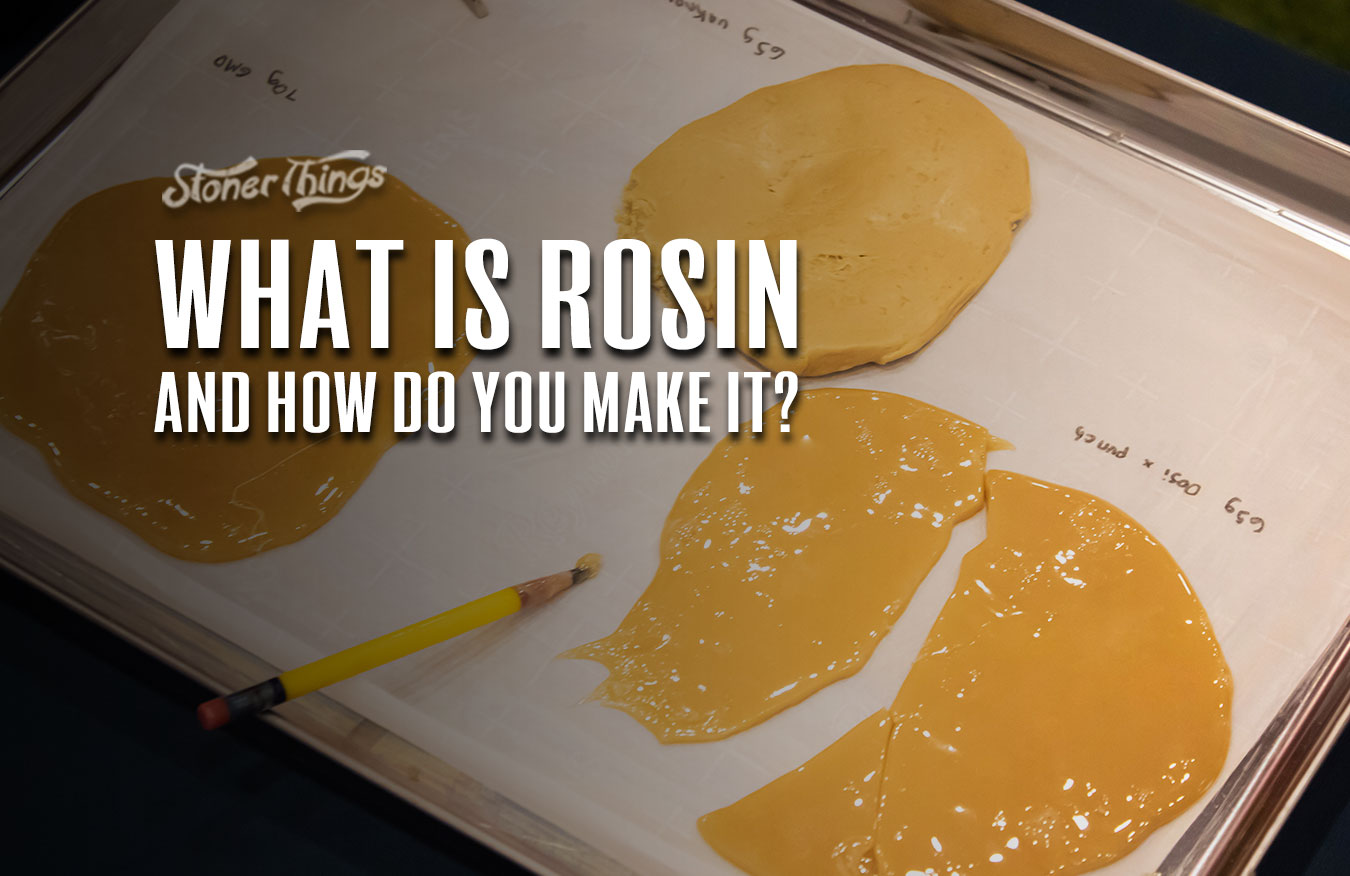Rosin is a cannabis concentrate that is considered to be cleaner than most other concentrates because it’s made without the use of solvents. As a solventless extract, making rosin involves using heat and pressure to extract cannabinoids from plant materials. Without the use of solvents, making quality rosin takes a lot of time so it tends to be more expensive on the shelf than solvent-based concentrates, but it usually offers a much richer depth of flavor and a slurry of other beneficial cannabinoids and terpenes that make rosin feel more potent. Below, we’re talking about all things rosin, including how to make it at home the easy way.
What is rosin?
As mentioned, rosin is a cannabis concentrate made in a solventless extraction that involves heat and pressure. It gets its name from the old-timey practice of creating rosin for violin bows from pine tree sap. Cannabis flowers and plant materials are first loaded into an industrial rosin press and then heated and squashed until the hot oil comes out. Since it’s just utilizing heat and pressure, it doesn’t involve chemical extraction and isn’t touched by chemicals or solvents.
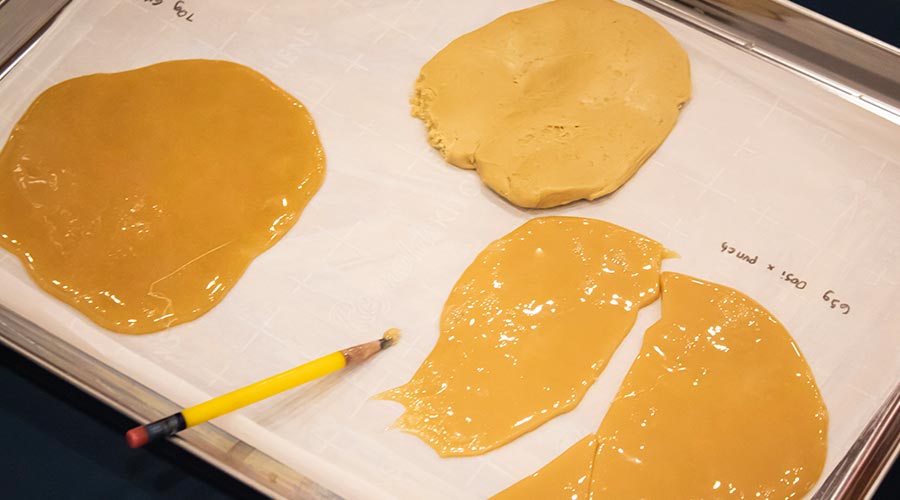

The pressing of cannabis materials for rosin is known as washing. It requires a lot of starting materials like flowers and trichome coated trim and yields a lot less product, which is why rosin tends to be more expensive than other concentrates. However, the process leaves behind a full-spectrum extract that contains the full cannabinoid and terpene profile of the plant, making it more flavorful, potent, and fully free of chemical solvents.
How is rosin different from other cannabis concentrates?
Since rosin is made in a solventless extraction, it’s full-spectrum. Many solvent-based extracts like shatter and wax are blasted with hydrocarbons to only pull out cannabinoids like THC and THC-a and a handful of terpenes that survive the high temperatures. Solventless extracts on the other hand offer the closest-to-the-plant concentrate experience including all the various cannabinoids and the full terpene profile of the original plant.
Further, many health-conscious cannabis consumers prefer rosin over solvent-based extracts, including resins, waxes, and shatters. Since no chemicals are involved in making rosin, there’s no chance to consume harmful residual butane, propane, or other particulates. Rosin looks like standard concentrates and is dabbed in the same way, but it tends to taste better and offer a cleaner feeling high.
Lastly, since making rosin doesn’t involve a high-tech chemical extraction process, it’s more accessible to hobbyists. You can purchase your own rosin press or make it at home using other heat and pressure methods much more safely than you could trying to make your own solvent-based extracts without a lab.
Live rosin vs. rosin
If you’ve shopped in a dispensary recently, there’s a good chance you saw live rosin somewhere on the shelf. It’s not much different than ordinary rosin since it’s made the same way, though it’ll cost you a little more because of the starting materials it’s made from. Regular rosin is typically made using dried and cured flowers, kief or hash which are easy to come by and relatively affordable. Live rosin on the other hand is made using fresh frozen plant materials.
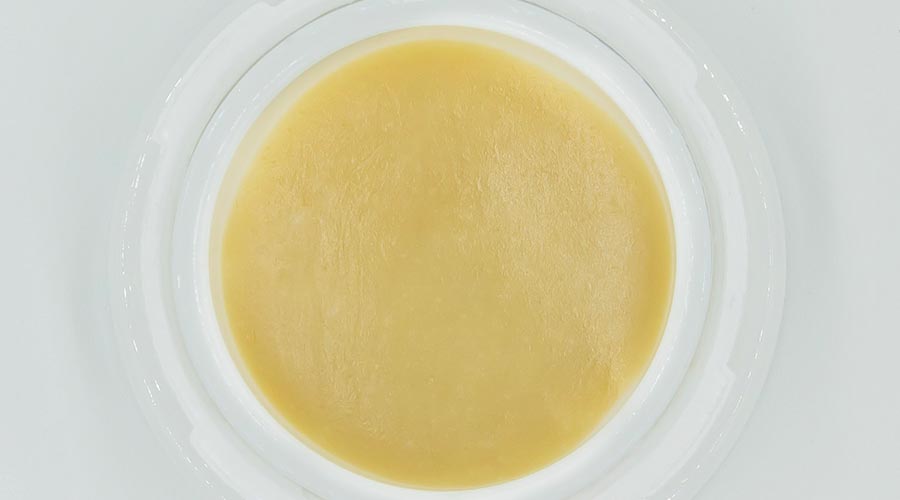

To make live rosin, plants are harvested and immediately bagged in freezer bags and frozen in a deep freezer. This practice preserves the structural integrity of the trichomes and the plant’s terpene profile, making the final product much more potent, flavorful and pungent. From there, the plant materials are washed in the bubble-hash making process to extract trichomes and terpenes and keep water content low for a cleaner extract. Without taking this extra step to wash the still-living plant materials, the water content would be too high and would create steam and boiling water inside the rosin press, leaving behind a harsh and flavorless product as all the terpenes and cannabinoids boil out.
Live resin checks in at around 85% cannabinoids and 15% or more terpenes. Ordinary rosin typically produces about 60% cannabinoids and 10% terpenes. That’s why you’ll pay up to $90 for a gram of live rosin. You’ll also notice that live resin looks way cleaner than standard rosin, too. Live rosin is an opaque concentrate that resembles wax or batter, though some are grainy. On the other hand, regular rosin is more waxy but typically much darker in color and not as fragrant. Rosin is still good, but live resin is in a league of its own. Both offer a potent and flavorful experience without the use of potentially harmful chemical solvents.
Rosin vs. resin
Rosin and resin are such close terms that it’s easy to confuse the two. However, in the world of concentrates, they’re both two very different things. Resin is an extract made in a solvent-based extraction using hydrocarbons or CO2 to pull the cannabinoids from the plant material. It leaves behind a sticky, gooey concentrate that ranges in shades of amber to light golden yellow. In some cases, making resin produces THC diamonds and a terp sauce, though it tends to resemble wax more closely.
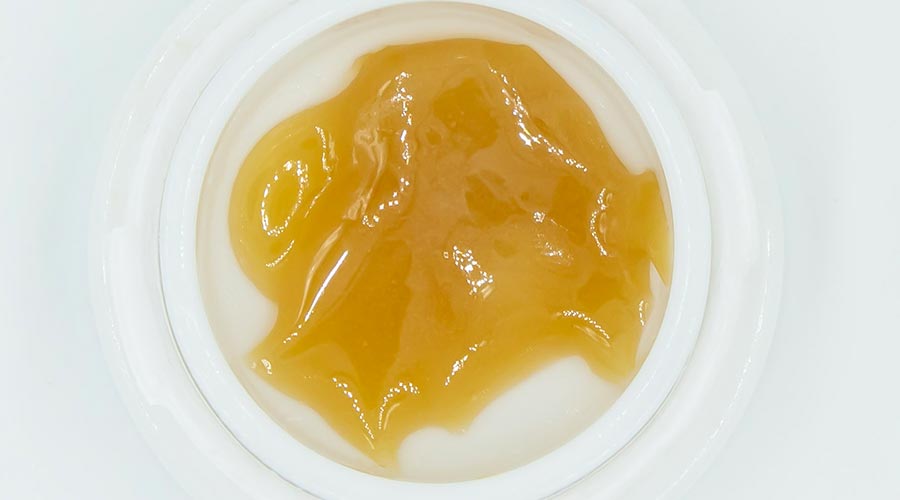

On the other hand, rosin is made without the use of solvents and contains the full spectrum of cannabinoids and terpenes. Rosin tends to be lighter in color and not at all runny, instead taking on a sticky, whipped texture. Both rosin and resin can be made into a live product by using fresh frozen cannabis as a starting material. Like live rosin, live resin is more potent and flavorful than ordinary or “dead” resin.
A good way to remember the difference between the two is with spelling. Rosin with an “O” uses 0 solvents.
How to make rosin at home
If you’re ready to try your hand at learning how to making this solventless extract at home, you’re in luck. You don’t need a fancy lab or a degree in chemistry to make a quality rosin. All you have to do is melt cannabinoids and terpenes with heat and squeeze them out of the plant materials with pressure. While your best bet is using a rosin press for a more refined product, you can get by just as well using the hair straightener method. Rosin presses are great for industrial applications, like making large quantities of concentrates, though they’re not practical for people who just want to enjoy a few dabs with some leftover buds.
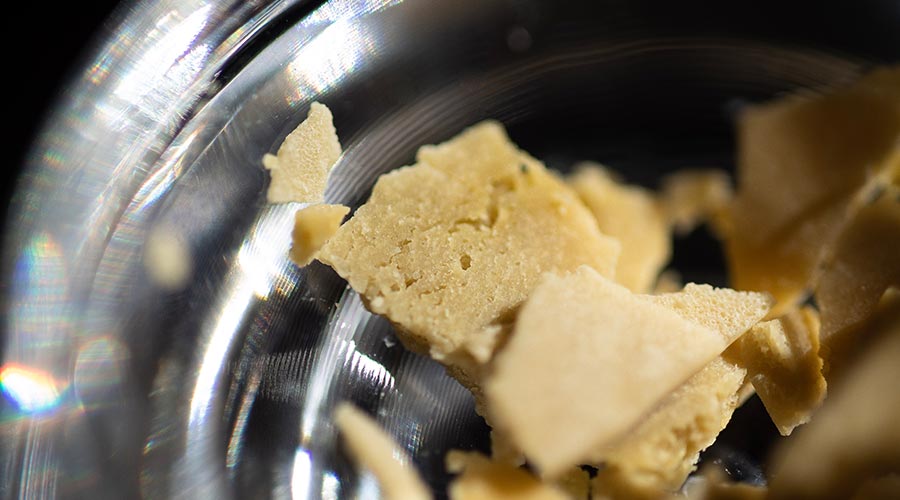

Keep in mind that the hair straighter method will leave behind more plant materials than a rosin press, but generally speaking they’re not harmful, just harsh. Start by gathering up your required materials and your cannabis.
Here’s everything you’ll need:
- Tong-style hair straightener (AKA a flat iron) with a low setting of 300°F or lower. Using heat higher than this will burn off your terpenes.
- Cannabis flowers, kief or bubble hash. You can use trim too, but it doesn’t yield anywhere near as much.
- Parchment paper. Use unbleached, and always avoid wax paper which can infuse wax into your rosin.
- Dab tool and collection tool
- Heat resistant gloves
- (Optional) Bar clamp for maintaining pressure on the straightener, and a micromesh filter to separate plant materials from the rosin
How to make rosin with a hair straightener — a step by step guide
- Heat up your straightener to a temperature between 280°F and 330°F
- Cut a piece of parchment paper to a size that will hold your starting material and fold it in half
- Sandwich your cannabis material in the middle of the folded paper and press it closed.
- Take the paper and bud and place it between the two heating elements on the hair straightener. Your starting materials shouldn’t be touching the heating element directly. Use more paper if necessary.
- Squeeze the hair straightener closed around the cannabis and parchment paper. Apply hard pressure using your hands or a bar clamp for 5-8 seconds until the materials start to sizzle. At this point, the trichomes are melting out of the materials.
- Remove the parchment paper from the straightener and unfold the paper. Remove the squished flowers and use a dab or collection tool to remove any additional plant materials. You should have nothing left on the paper except for your rosin.
- Repeat this above steps with a new piece of parchment paper to extract more rosin from the same bud.
- (Optional) Run your rosin through a micromesh screen to further remove unwanted plant materials.
- Use a collection or dab tool to scrape the final rosin into a non-stick silicone puck to keep it fresh and airtight.
- Let the rosin cool to room temperature. You can even keep it in the fridge to help keep it fresh.
- Dab it like any other cannabis concentrate, and enjoy!
After extracting your rosin, the remaining bud can be still be used in smoking, vaping or edibles.








